We recently had the opportunity to talk to Dennis Nelson, CEO & President of the Project WET Foundation, who shared how their organization is helping conserve the world’s water resources through water education.
Can you tell us the story of Project WET and what you hope to accomplish?
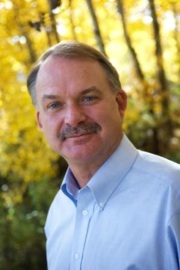 I was working with the North Dakota State Water Commission when I founded Project WET in 1984. At that time, the Commission had a planning division with the mission of educating the public about water resources and management, but we found a lack of accessible materials for educating children—future water users—about water. We also found that there was great interest in the topic, not only among students but also among their teachers. That led us to focus the education efforts on reaching children through teachers and other educators.
I was working with the North Dakota State Water Commission when I founded Project WET in 1984. At that time, the Commission had a planning division with the mission of educating the public about water resources and management, but we found a lack of accessible materials for educating children—future water users—about water. We also found that there was great interest in the topic, not only among students but also among their teachers. That led us to focus the education efforts on reaching children through teachers and other educators.
In 1989, Montana State University in Bozeman invited what had become known as Project WET North Dakota to pilot the Project WET model in Montana, Idaho and later Arizona. The success of the pilot led to funding from the US Bureau of Reclamation for the development and publication of the Project to fund the development and publication of the Project WET Curriculum and Activity Guide in 1995 and the establishment of the Project WET USA network in all 50 states. Project WET published more than 50 water education guides and books for children and teachers between 1995 and 2005 and launched and expanded the Project WET international network to include 19 countries.
In 2005, Project WET left Montana State University to form the Project WET Foundation, a private, independent 501(c)(3) organization. The Foundation continues to publish educator guides, children’s activity booklets, resource posters and much more. Moreover, Project WET’s international work has greatly expanded since then, with Project WET working in some capacity in more than 50 countries around the world. Our materials have also been translated into other languages and localized with the input of educators on the ground in countries ranging from Afghanistan to Tanzania.
We have found that Project WET works because its hands-on, interactive methods of education are universal—children in Uganda respond just as enthusiastically to learning a song about proper hand washing as children in Montana do. Our driving mission is to reach children, parents, educators and communities of the world with fun, science-based water resources education that empowers people to take action in their communities to help solve local water-resource issues, a concept we call ActionEducation™.
How can water awareness help conserve the world’s water resources?
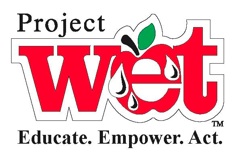 Water education and awareness helps individuals understand where they fit within the larger world of water. Once they identify their watershed address and discover their role in the water cycle, it becomes easier for them to recognize that water knows no boundaries. It flows throughout the world and connects everyone. We believe that knowledge helps people to think about the actions that they take individually and collectively—and that understanding the real value of water promotes the management, conservation, and protection of the resource.
Water education and awareness helps individuals understand where they fit within the larger world of water. Once they identify their watershed address and discover their role in the water cycle, it becomes easier for them to recognize that water knows no boundaries. It flows throughout the world and connects everyone. We believe that knowledge helps people to think about the actions that they take individually and collectively—and that understanding the real value of water promotes the management, conservation, and protection of the resource.
It appears that you hope to reach future farmers and future homeowners. Do you have any educational tools or activities around the subject of irrigation for both agricultural and landscape?
One of our guiding principles can be succinctly described as “Water for all water users.” To us, that means that water of sufficient quality and quantity is vital for all water users, whether they are farmers and ranchers, manufacturers, homeowners or recreationists.
We do have publications and activities that focus on irrigation and landscape, in fact the Conserve Water Educator Guide and companion Conserve Water Kids In Discovery series (KIDs) activity booklet are completely dedicated to this topic. Project WET has gone to great lengths to help people understand that water users you may never see or even know exist, use water to grow, produce, manufacture and deliver food for people to eat. In the activity “Water Works,” for example, we discuss “virtual” water, and agriculture is one focus group. Other examples can be found in the Discover a Watershed Series, specifically in the Rio Grande/Rio Bravo and the Colorado education materials.
What are some of the biggest challenges that you face in spreading water awareness throughout the world?
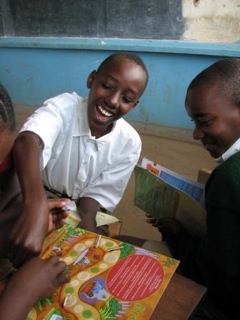 Perhaps the biggest challenge is helping individuals and organizations understand that water fits into nearly every aspect of human life. In the developing world, that is in some ways easier to accomplish because clean, safe water is not yet taken for granted in many areas. In developed countries such as the United States, however, water is a given, noticed only when something goes wrong.
Perhaps the biggest challenge is helping individuals and organizations understand that water fits into nearly every aspect of human life. In the developing world, that is in some ways easier to accomplish because clean, safe water is not yet taken for granted in many areas. In developed countries such as the United States, however, water is a given, noticed only when something goes wrong.
The fact is that water affects almost all human activity. We can’t grow food without water, and most people recognize that, but they may not realize that we also cannot make a pair of jeans or even provide electricity to our homes without water. The “green” bandwagon may be increasingly popular, but that doesn’t often include a thought for water. We believe that both individuals and organizations need to consider their “water footprint”—the total volume of water that it takes to produce goods and services and simply live their lives. Explaining what the water footprint is and why it is important is a huge challenge.
Another challenge is delivery. The need for water education is huge globally, and we are constantly challenged to effectively reach people with our materials—meaning that school and community educators are using Project WET materials and that student learning is occurring. We monitor this through independent field tests and ongoing research. Our approach to delivery is broad, as we work with people in places that have no electricity or running water, so a web-based program is of no value. On the other hand, we work in some of the most technologically advanced places in the world, so we also need to accommodate digital delivery as an enhancement to our longstanding commitment to network-led, face-to-face workshops, courses and events.
Can you describe any work you are doing in developing countries around water-related health issues or low-cost irrigation methods?
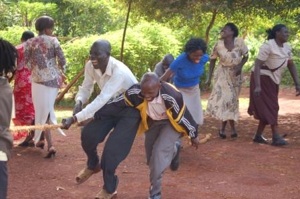 A few years back, a researcher from a prominent philanthropic foundation asked, “What can a water education program like Project WET do to reduce the number of deaths caused by water-borne diseases?” This was a watershed moment for Project WET, an inquiry that stimulated considerable discussion and reflection, and served to help Project WET better define its vision and role for worldwide water education.
A few years back, a researcher from a prominent philanthropic foundation asked, “What can a water education program like Project WET do to reduce the number of deaths caused by water-borne diseases?” This was a watershed moment for Project WET, an inquiry that stimulated considerable discussion and reflection, and served to help Project WET better define its vision and role for worldwide water education.
Eventually, this discussion led to a decision to add ActionEducation™ to the Project WET Foundation’s core work. Through ActionEducation, Project WET’s mission worldwide has evolved from awareness, to empowering learners to take action, leading to sustainable solutions for community water resource issues.
To raise awareness of the importance of water, sanitation and hygiene and to promote actions and behaviors with positive outcomes, the Project WET Foundation, with the support of USAID’s Africa Education Initiative and in cooperation with local educators and governments, developed a series of hands-on education materials for sub-Saharan African teachers and students. The materials were distributed in 14 African countries, reaching more than 30,000 schools; 175,000 teachers; and five million students between November 2007 and September 2009.
Evaluations conducted at the conclusion of the Africa projects showed marked positive improvements in behaviors that reduce waterborne diseases. Those results have encouraged the scaling up, localizing and distribution of the materials into other areas. We are working on Spanish-language versions for a UN-HABITAT project in five Latin American countries as well as in India. We also work together with other organizations that promote water, sanitation and hygiene (WASH) improvement programs, such as Engineers Without Borders, the Peace Corps and Global Water Challenge.
As far as low-cost irrigation goes, rainwater harvesting is part of our program, and we link this to providing water to grow food in gardens and to drinking water.
How is Project WET leveraging growing communication technologies like mobile smart phones, tablets, or social media to improve water education?
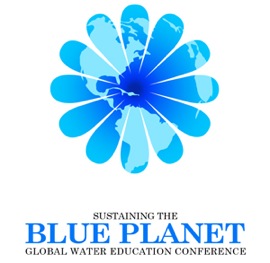 We believe in the power of social media to tell the story of what we’re doing, which is why we have a Facebook, Twitter and LinkedIn presences as well as a blog and email newsletter. We are also working to integrate technologies such as SmartBoards, web portals and e-Learning into our curriculum and publications. We are in the process of developing an online water education module for tweens as well, although I can’t say too much about that yet because it’s still under wraps.
We believe in the power of social media to tell the story of what we’re doing, which is why we have a Facebook, Twitter and LinkedIn presences as well as a blog and email newsletter. We are also working to integrate technologies such as SmartBoards, web portals and e-Learning into our curriculum and publications. We are in the process of developing an online water education module for tweens as well, although I can’t say too much about that yet because it’s still under wraps.
In Africa, we have found that mobile phones are a great help for conducting successful project evaluations. We worked with the Massachusetts Institute of Technology last year on a pilot project to institute an automated mobile phone survey to gauge the effectiveness of our WASH materials in Uganda.
As a publishing house, we recognize the need to keep our eye on technological innovation. At the same time, however, we believe that in many cases the most effective methods of education require no technology at all—just interactive, hands-on activities that get people out of their seats and into learning.
How can people or businesses get involved or help Project WET?
We rely on multiple sources of funding to continue our work, including the support we get from the educators around the world who use our materials. Buying and using our materials (http://store.projectwet.org) to teach and learn about water is one of the best ways to support Project WET! We also actively seek corporate partnerships and sponsorships as well as individual donations to extend our reach. From an awareness perspective, we love to share our work with people through our Facebook page (http://www.facebook.com/ProjectWET) and Twitter feed (http://twitter.com/ProjectWET) and to subscribers of our email newsletter.
